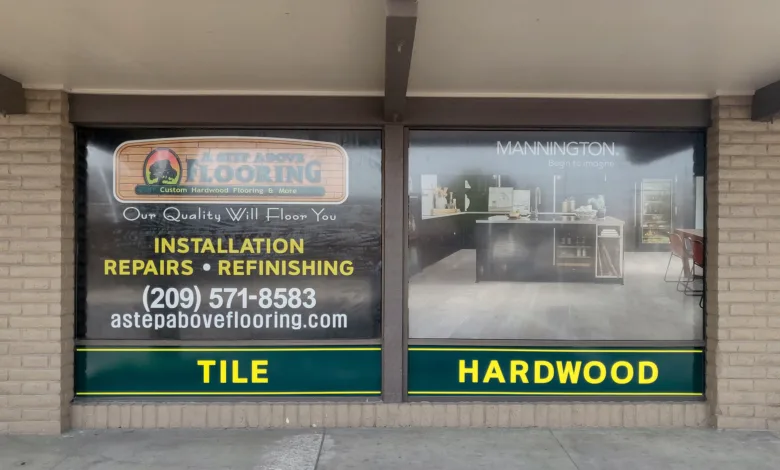
When I started in the sign industry, the typical window graphics were simply cut vinyl lettering. If we were getting fancy, we may have thrown in a second surface installation, cut SignGold lettering, or we might have layered on the vinyl with perhaps a drop shadow or outline in multiple colors.
Nowadays, there are so many more options available. When a customer chooses to use their storefront window graphics to advertise or to extend a vehicle wrap across their windows, we have a series of considerations to help them choose the right media for the desired end result.
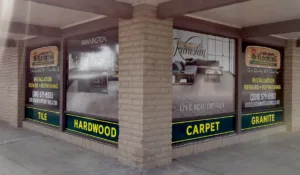
Long versus short
Anytime we start a new project with a customer, there’s an interview process. During this process, we ask a lot of questions to narrow down the correct choices to meet the customer’s needs. There are four main questions that come to mind as I help a customer decide on the right material for the job. There is no particular order to the questions as they are all interrelated and often overlap.
One consideration is how long the window graphics need to last. If we’re doing a vehicle wrap that extends across the windows, then we choose a cast perforated film like 3M 8170-P50 so we get more durability to correspond with the life of the wrap.
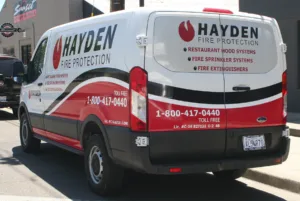
If it’s a storefront window advertising a holiday special, which means it doesn’t need to last more than a few months, we might consider a film like Avery Dennison MPI2077, a short-term, intermediate film with ultra-removable adhesive for ease of removal.
Solid versus spot graphics
In this case, we’re determining the coverage the customer wants. Are we covering an entire car window to extend a wrap or an entire storefront window to block visibility? Solid coverage is often a great option for window graphics to provide maximum advertising while still offering options for visibility and light blocking.
Stripes across multiple windows or banners of graphics on a window are a great option for storefront windows too. It provides large chunks of advertising and storefront branding by tying together multiple windows while keeping total square footage down compared to complete coverage.
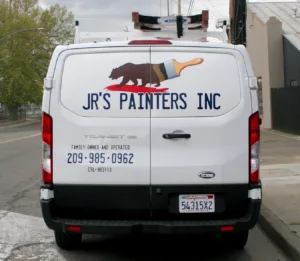
Often spot graphics can make a large statement on a storefront window while still allowing excellent visibility out from the inside. This might be large contour cut lettering or a logo that covers multiple large windows. These kinds of decorative approaches offer a unique look.
If the customer is on a budget, spot graphics might be the best choice to keep costs down. Front glass lettering, a logo, or a bullet list of information often work best as spot graphics and provide information in an effective manner.
Visibility versus light blocking
I mentioned this as part of the previous consideration, and it’s one of those areas where the questions we ask often overlap in how we choose a film. Oftentimes a customer wants to achieve maximum coverage on their windows for advertising but also still wants to allow their customers or employees to see out from the inside.
In this case, a perforated film is a great option. If the advertising is on a storefront, a 65/35 perforation pattern is a good choice. Avery Dennison MPI 2728 is a calendered film that provides one-way visibility on stationary windows.

ClearFocus 50/50 ClassicVue perforated window film is another great choice for vehicles. The hole pattern provides advertising coverage from the outside and visibility out the windows from the inside. Perforated films also reduce heat and provide light transmission.
Perhaps the customer doesn’t want any visibility through the window; rather, they want to block visibility into a vehicle, for example. We often get this with commercial vans that have rear windows. A solid film allows the customer to continue their wrap across the windows while also blocking visibility into the van. Storefronts with windows looking into a storage space might also want total coverage with no visibility from the outside.
Full coverage to block visibility then leads to the question of how much light the customer wants to allow through. 3M Controltac print film 40C offers a gray adhesive option with an opaque opacity while 3M Envision Translucent Film IJ3730-50 uses interior lighting to help pop the color in the printed image, while still allowing light to come through the image.
Printed versus decorative
This consideration isn’t to imply that a printed film can’t also be decorative; rather, it’s to consider the look a customer is going for. Are they looking for a window film option that is printed, typically for advertising purposes, or one that is decorative?
A printed film combines all the above considerations to determine the coverage, visibility, light passage, and durability that best meets the customer’s needs, whether it’s on a storefront window or on a vehicle’s windows.
Decorative films answer many of these same considerations while extending into texture options that help control light and privacy of both commercial and residential spaces, while also enhancing the aesthetics of a space. 3M Fasara glass finishes are a great option with over 50 designs available. Avery Dennison offers Etchmark and Frosted Sparkle options in its SC900 Super Cast Series.
We’ve installed these types of etched-look films many times over the years. The window graphics provide privacy between spaces while still allowing light to move through. This keeps the space feeling open and airy while also cutting down visibility.
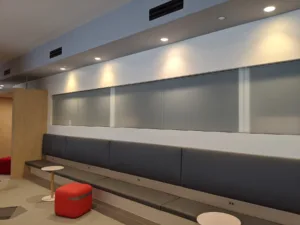
A local college has a row of offices on one side of some large windows, while there is a lounge/study space for the students on the other side of the wall of windows. The college quickly found that this was awkward for the people in the offices as they worked on their computers. Simple full coverage using 3M 7725-314 Dusted Crystal, a matte, translucent vinyl, provided a professional look and privacy without cutting out the natural light.
If you take this series of tips into consideration, you can and will help your customer choose the right media for the desired end result.



